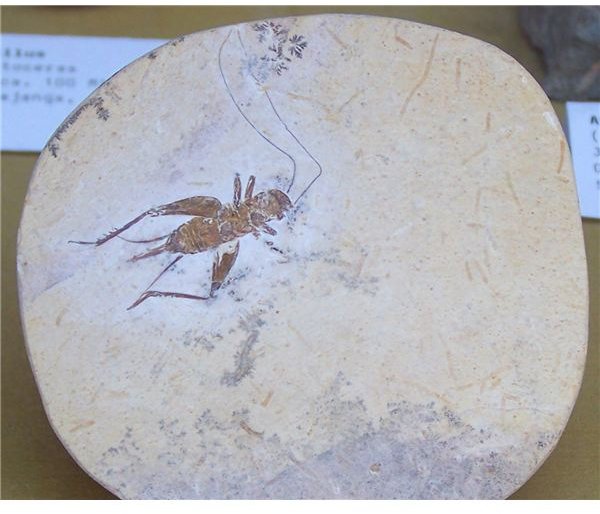How to Define Fossil Records: Exploring Evolution and Fossil Records of the Past
The Fossils Record and the Evolution of Life Forms
Scientists use the fossil record - all the fossils found on our planet - to understand how life has evolved from single-celled organisms to all the various life forms that we see around us today. You can also define fossil records for species or groups of species; for instance the fossil record of mammals. From the fossil record we also can learn what extinct species looked like, how they lived and their evolutionary relationships. Though the fossil record is not complete, vast numbers of fossils from all major fossil groups have been found.
The Fossil Record is Reflected in the Stratigraphy
It was William Smith, a canal surveyor in England around 1800, who first realized that the same fossils would occur in the same layers of rocks all over England. Each layer would be characterized by different fossils. Furthermore, layers closer to the bottom would show simple life forms or no life forms at all, while layers closer to the top would show more complex life forms.
When Darwin published his theory of evolution in his “On the Origin of Species” in 1859, it became clear that the fossils found in the different layers showed the evolution of life from simple aquatic life forms to fishes, terrestrial animals, reptiles and mammals. The Geological Time Scale was defined according to the major fossil groups found in the layers. All over the world the layers appear in the same order. Different layers of rocks are dated with carbon-14-dating and radiometric dating and gives very accurate estimates of all ancient rocks and fossils. The mapping of the different layers of rock is referred to as the stratigraphy. The Geological Time Scale is used when describing the fossil record, and when a fossil’s age is estimated.
Major Evolutionary Events in the Fossil Record
The fossil record is evidence for the theory of evolution, and scientists define the fossil records of individual species or groups of species to understand how species evolved from other species. From the fossil record, we also see macroevolutionary patterns such as the five known mass extinctions.
Evolution and the fossil record has been studied for many years and the following are just a few of the major evolutionary events that have been described through analyzing the fossil record:
-
Single-celled life forms appear approximately 3.5 billion years ago.
-
The Cambrian explosion of life: after single-cellular life forms had existed for about 3 billion years, an evolutionary radiation occurred 530 million years ago. The Cambrian explosion lasted 10 - 15 million years during which time all animal

phyla evolved.
-
Plants conquered land about 430 million years ago, during the Silurian period.
-
The first insects are found on land about 425 million years ago.
-
The first tetrapod vertebrates, amphibians, appear around 360 million years ago in the Devonian period.
-
The best known mass extinction is probably the Cretaceous-Tertiary extinction 65 million years ago when 85% of all species, including the dinosaurs, went extinct and allowed for the mammal and bird species to flourish.
Paleontologists and other interested fossil hunters, find new, interesting fossils all the time to add to the fossil record; thus helping us to define the fossil record both by the past and present. The theory of evolution is continuously supported and expanded by these new fossil finds and broadens our understanding of how all the wondrous life forms that we see on our planet evolved.
References
Bromham L., Rambaut A., Fortey R.,Cooper A., and Penny D. “Testing the Cambrian explosion hypothesis by using a molecular dating technique” PNAS Proceedings of the National Academy of Sciences of the United States of America 1998, vol. 95 no. 21 12386-12389 https://www.pnas.org/content/95/21/12386.full
Begon M., Harper J. L., Townsend C. R. Ecology: Individuals Populations and Communities. Blackwell Science; 3rd Edition (18 Mar 1996) https://books.google.co.za/books?&id=3xklog5kVGMC&oi
Benton M. “Accuracy of Fossils and Dating Methods” https://www.actionbioscience.org/evolution/benton.html
Benton M. “Evidence of Evolutionary Transitions” https://www.actionbioscience.org/evolution/benton2.html
The Fossil Record, https://www.fossilrecord.net/fossilrecord/index.html
Smith A. B. and Peterson K. J. “Dating the Time of Origin of Major Clades: Molecular Clocks and the Fossil Record.” Annu. Rev. Earth Planet. Sci. 2002. 30:65–88 https://www.nhm.ac.uk/research-curation/staff-directory/palaeontology/smith/assets/pdf15.pdf
Taylor P. D. ed., Extinctions in the History of Life, Cambridge University Press 2004. https://assets.cambridge.org/97805218/42242/excerpt/9780521842242_excerpt.pdf
Valentine, J. W., Jablonski, D., Erwin, D. H. : “Fossils, Molecules and Embryos: New Perspectives on the Cambrian Explosion. " Development 1999, 126(5): 851-859. https://dev.biologists.org/content/126/5/851.full.pdf
Image Credits
Cricket fossil: Wikimedia Commons/Woudloper
Rock Layers: Wikimedia Commons/Geographbot
This post is part of the series: All About Fossils
This article series focuses on fossils. It includes a guide to the major groups of fossils, explores which fossils are found in the deserts around the world, describes how deep sea fossils are used to shed light on evolutionary events, explains the fossil record, and describes how fossils are formed
